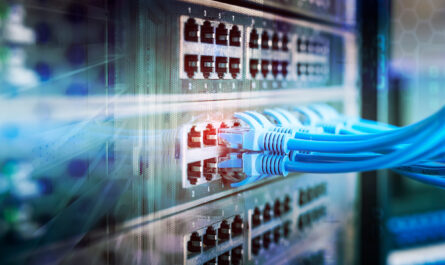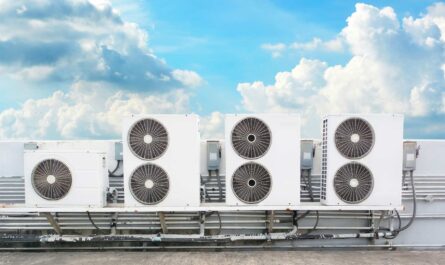
Sensor fusion is a technique used in robotics and autonomous systems that combines sensory data or data derived from disparate sources such that the resulting information has less uncertainty than would be possible when these sources were used individually. It allows autonomous systems to make better or more reliable decisions and to build a robust understanding of their surroundings. With advancements in sensor fusion technologies, we are witnessing increasing capabilities of autonomous systems ranging from self-driving cars to drones and industrial robots. This remarkable progress would not have been possible without the powerful insights and more accurate perception of the environment enabled through sensor fusion approaches.
What is Sensor Fusion?
A Sensor fusion system aggregates data from several heterogeneous sensors, processes the data into useful information and presents it to the user. The key aspect of sensor fusion is that by combining data from multiple sensors, it mitigates the weaknesses inherent in individual sensors and thereby provides more complete and accurate data than could be obtained sensor simple. For instance, a camera may be able to provide video and infrared information, Radar provides distance and range information, while an inertial measurement unit (IMU) provides orientation information. By fusing data from all the sensors, a more robust understanding can emerge that overcomes individual sensor limitations such as field-of-view restrictions or sensitivity to lighting conditions.
Sensor Fusion Approaches
There are various approaches to sensor fusion depending on the type of processing involved and the application requirements. Some of the commonly used sensor fusion techniques include:
– Data fusion: It is the lowest level of fusion where raw data from multiple sensors is consolidated for efficient transmission or storage. However, the data is not analyzed or interpreted.
– Feature fusion: In this approach, features extracted from individual sensors like object edges detected through vision sensors are combined. This level of fusion requires some processing of individual sensor data.
– Decision fusion: Higher level information from each sensor is fused by integrating inference or decisions from different sensors. For example, combining vision and radar detection of an object.
– Contextual fusion: The highest level of fusion uses context and behaviors modeled from previous fused information to make sense of new data. Spatial context and temporal history help resolve ambiguities.
Applications in Autonomous Systems
Sensor fusion unlocks immense capabilities for autonomous systems by providing comprehensive environmental perception. Some key application areas include:
Self-driving Cars
One of the primary applications of sensor fusion is for perception in self-driving vehicles. Cars typically use cameras, radars, lidars along with other sensors to map the environment, detect and classify road users. Deep sensor fusion of vision,lidar and radar significantly improves object detection, recognition and tracking capabilities compared to independent sensors. This enhanced perception enables autonomous navigation.
Unmanned Aerial Vehicles (UAVs/Drones)
Drones heavily rely on sensor fusion for functions like indoor and outdoor navigation without GPS, obstacle avoidance, computational photography and inspection flights. By combining information from cameras, IMUs, proximity sensors and GPS, drones can precisely sense and map surroundings. This enables autonomous drone delivery, infrastructure monitoring and other commercial applications.
Industrial Robotics
Industrial robots perform complex material handling, packaging, assembling and quality control tasks on factory production lines. Here sensor fusion helps robots reliably grasp, identify and track parts through integrated processing of force/torque sensors, 3D vision and motion data. This precise perception improves inspection accuracy, flexibility and collaborative capabilities of robots.
Augmented Reality/Virtual Reality
Sensor fusion is a critical component for enabling truly immersive augmented and virtual reality experiences. It combines data from cameras, IMUs, depth sensors and other inputs to map environments, localize users and enable natural hand/body interactions. Fused understanding of user motions, gazes and gestures drives next-gen AR/VR applications across gaming, design and more.
Challenges in Sensor Fusion
While sensor fusion vastly improves perception capabilities, there are also several technical challenges that need to be addressed:
– Sensor synchronization: Integrating data precisely from asynchronous sensors operating at different update rates and latencies is difficult.
– Noisy and ambiguous data: Raw sensory inputs are often degraded by noise, calibration errors or environmental factors increasing ambiguity infused outputs.
– High computational costs: Real-time fusion of data from multiple high-resolution sensors requires significant processing power which limits on-board deployment.
– Lack of labeled datasets: There is a scarcity of large real-world datasets with sensor fusion labels for developing robust machine learning models.
– Changing environmental dynamics: External conditions like weather, lighting variations pose challenges to generalizing fusion models for dynamic outdoor environments.
Ongoing research in areas like sensor calibration, probabilistic modeling, transfer learning and efficient deep fusion approaches aim to address these challenges to realize the full potential of sensor fusion.
Conclusion
Sensor fusion is a transformative technology crucial for advancing autonomy and enabling new paradigms for human-technology interaction. As fusion algorithms continue to get more sophisticated alongside novel sensors, we will witness increasing capabilities of autonomous machines. Widespread deployment of sensor fusion powered applications has immense potential to revolutionize transportation, manufacturing, healthcare and many other domains by improving safety, reliability and productivity. Going forward, large-scale data collection and open collaboration will be key to overcoming remaining challenges and realizing a future where perception is no longer a barrier for autonomous machines.
*Note:
1. Source: Coherent Market Insights, Public sources, Desk research
2. We have leveraged AI tools to mine information and compile it



